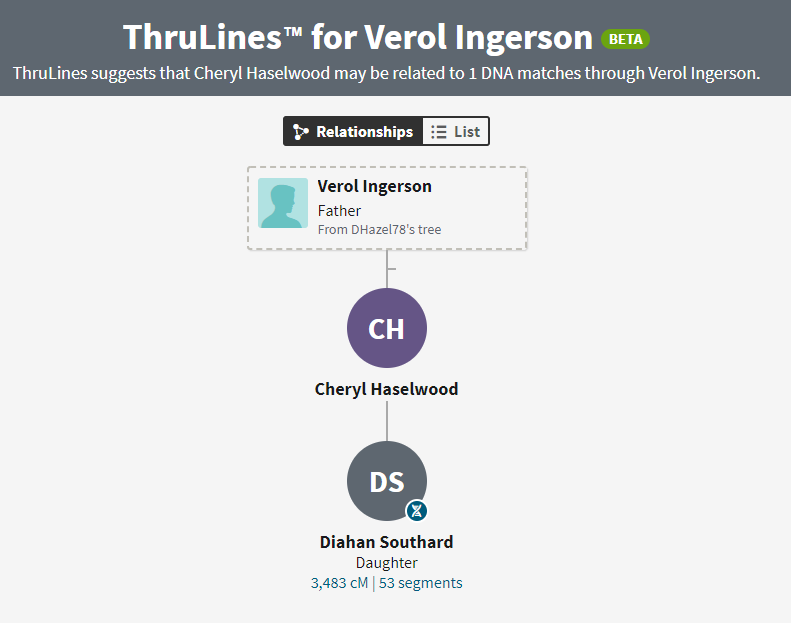Last updated: January 13, 2025
AncestryDNA’s ThruLines tool helps you visualize possible family tree relationships with your DNA matches.
ThruLines tool is its latest brainchild for helping you place your DNA matches in the right place on your tree. ThruLines won’t solve all your match mysteries, but it’s a HUGE step forward. Mostly because it helps you visualize how everything—your genetic tree and your genealogical tree—comes together.
Watch this quick video introduction to ThruLines—and then read over the summary below.
Collect known cousins from your DNA match list
Before ThruLines came along, Ancestry could help you find other tested descendants of your ancestors if you both had public trees with your common ancestors listed. The site would point them out using their classic leaf hints. But if there weren’t obvious tree connections between you, it was pretty much up to you to fill the gaps on your tree between you and your match.
Ancestry’s ThruLines tool aims to help you fill in those gaps by searching other Ancestry public or private-but-searchable trees for genealogy connections between your tree and the one posted by your DNA match. Then ThruLines draws trees to illustrate possible genealogical paths that connect you. You can explore your ThruLines suggestions by going to the DNA tab > ThruLines.
ThruLines are organized by common (or potential common) ancestors between you and your matches, based on your tree data:

Click on an ancestor’s name to explore ThruLines tree reconstructions showing your DNA matches as fellow descendants:

As shown in the numbered areas above:
- Several matches may appear in your reconstructed tree, depending on how many matches have tested in a particular branch of your family. (In this case, the ThruLines can show me 3 matches through Edward Thomas Gouldsbarry.)
- Ancestors who are present in your tree appear in solid boxes.
- Dropdown menus let you view the matches that descend through each branch of the family.
Any potential common ancestors (suggested by tree connections) will appear in dotted-line boxes.
Using Ancestry ThruLines
To participate in ThruLines, AncestryDNA customers need to link their DNA results to a public or private searchable family tree, and your matches need to do the same. Preferably, your trees will have at least 3-4 generations. Make sure you’ve added whatever details you can about dates, places and family relationships, not just for direct ancestors but for those siblings, aunts, uncles and cousins who may become those “missing links” in your ThruLines experience.
What I love about ThruLines is the powerful visualization you get for better understanding your overall tree. When you start working on any particular family line, check to see whether ThruLines shows you any DNA matches who share that descent. This is also a great way to see who has tested before your big family reunion (or, on the contrary, which branch doesn’t seem to have any DNA matches yet).
Remember that the tree reconstruction you see is only as good as the tree data. That’s worth restating: these trees are not DNA based. They are based only on the genealogical data in trees! You need to verify the tree data yourself. Here is a good example, where ThruLines is suggesting that my mom is a descendant of her adopted father, based solely on her DNA match with me (her daughter).
Ultimately, you need to check your genetic versus genealogical relationship.
To ensure your tree data is correct, you’ll need to do traditional genealogy using records. An Ancestry subscription can help with that by giving you access to their thousands of records. You can explore all of this and more with a free two-week trial to learn if an Ancestry subscription is right for you.
More AncestryDNA Tips
Thrulines is just one of many great genetic genealogy tools you can use to track down more information about your family history. Learn about the other features Ancestry offers and how you can make the most of them with our AncestryDNA Tour. The AncestryDNA Tour includes over 90 minutes of video instruction divided into 16 different segments, and comes with a printable, interactive workbook, so you can apply what you learn to your very own tree. With the Tour, you’ll be an AncestryDNA pro in no time!



